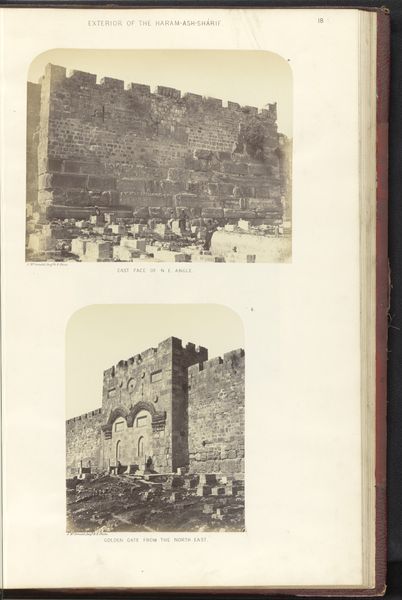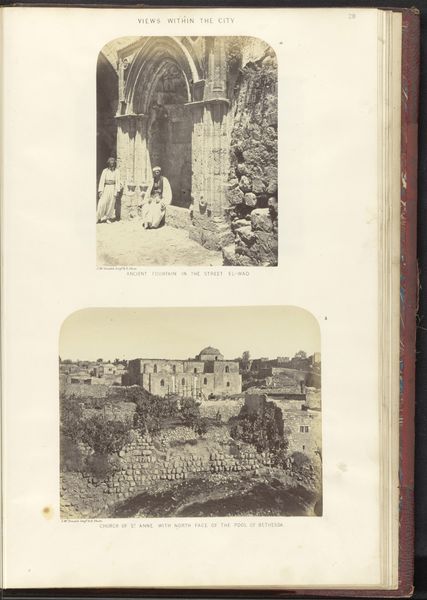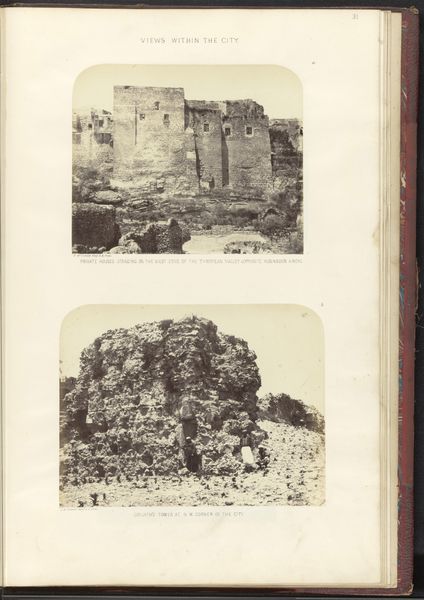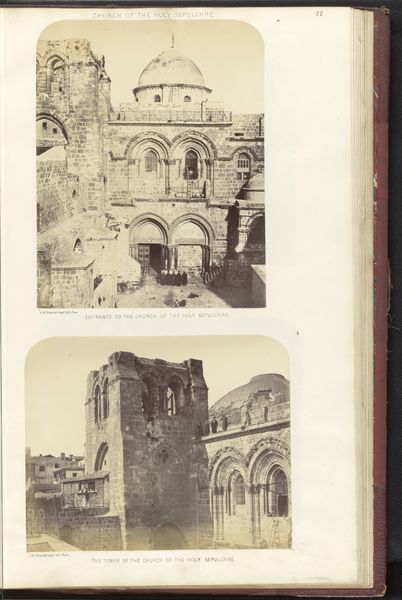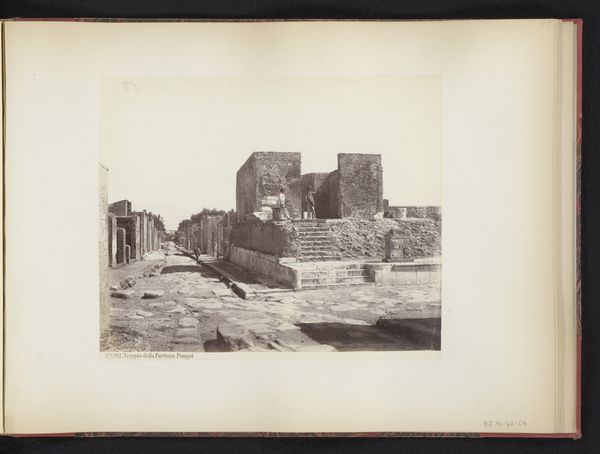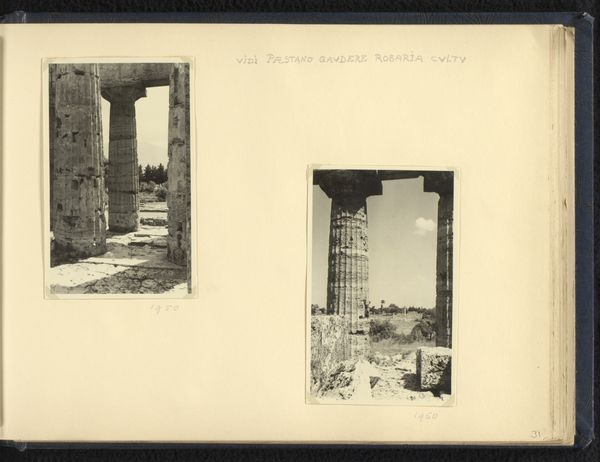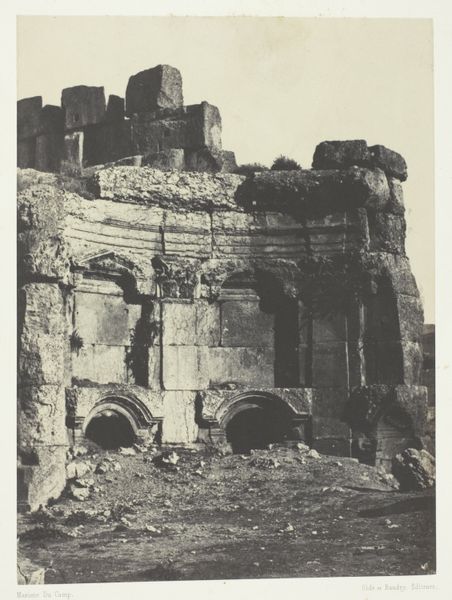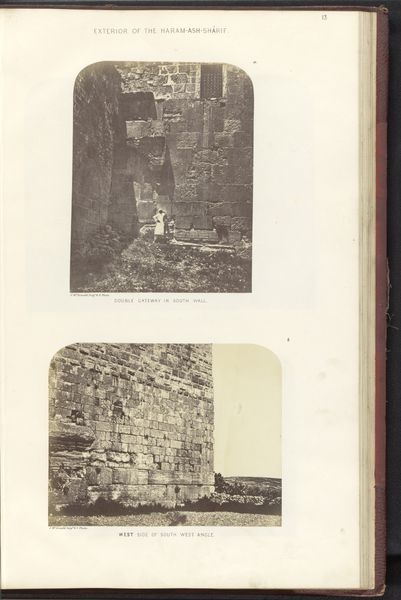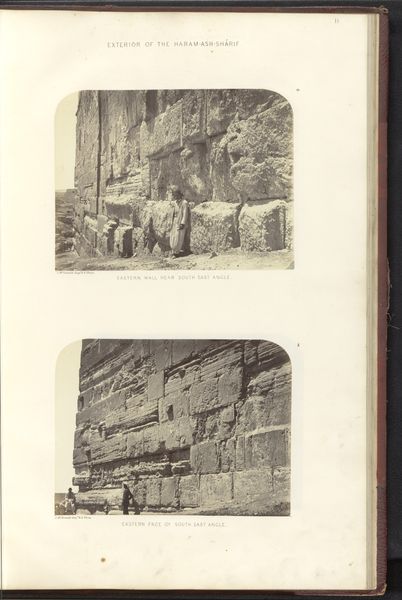
photography, albumen-print
#
landscape
#
photography
#
ancient-mediterranean
#
cityscape
#
islamic-art
#
albumen-print
Dimensions: height 523 mm, width 340 mm
Copyright: Rijks Museum: Open Domain
Editor: We're looking at a fascinating albumen print from before 1865, titled "Two Views of the Golden Gate on the Temple Mount in Jerusalem," attributed to James McDonald. It's quite striking how the photos show the decay of the structure. What kind of history is embedded in this image, for you? Curator: It's less about embedded history, and more about how the image *creates* a certain kind of historical narrative, right? We're seeing the Golden Gate not just as an architectural element, but also as a site caught in complex power dynamics. Look at how the camera frames the ruins; it emphasizes a certain romantic view of decay and decline. Who is given permission to look at this site? And how do you imagine that relates to access, power, and cultural significance, in its time? Editor: I suppose I hadn't thought about who it was *for*, just that it was *of* a place. It seems like it invites you to witness this distant, historical space. Was photography a political act back then? Curator: Absolutely. The act of documenting, especially in a contested region like Jerusalem, carried immense political weight. Images like this circulated in Europe, shaping Western perceptions of the Middle East. And crucially, it begs the question of who *gets* to represent that history, whose perspective becomes the dominant one. Do you see the political statement in who owns the past and, furthermore, the vision for the future? Editor: Yes, the images appear neutral, but they are, as you point out, presenting a very particular point of view. I now notice that the people included are not central but serve only as minor features. I wonder what impact this type of documentation had on society? Curator: The effect can't be overstated. This type of visual record influenced policies, tourism, and even theological interpretations. These images cemented a narrative that persists in many forms. Editor: I now look at it not as an antique photo, but a historical document loaded with perspectives. Thanks for the lesson.
Comments
No comments
Be the first to comment and join the conversation on the ultimate creative platform.
